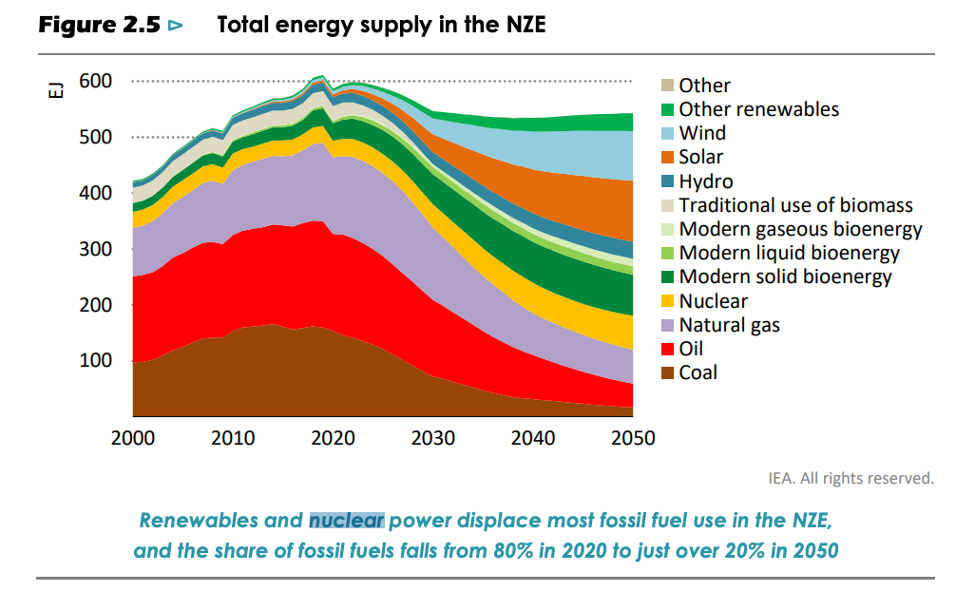Nuclear FAQ
Interested in diving deeper into nuclear science and technology?
Our nuclear science & technology workshops are designed just for you.
Interested in diving deeper into nuclear science and technology?
Our nuclear science & technology workshops are designed just for you.

When considering the safety of our energy sources, it’s imperative to examine both their environmental impact and their potential risks. According to Our World in Data, the cleanest energy sources—wind, nuclear, and solar—are also the safest. The World Health Organization highlights the staggering toll of air pollution, attributing 7 million deaths annually to its effects. Therefore, transitioning to clean energy isn’t just an environmental imperative; it’s a human health necessity.
Delving into the emissions aspect, nuclear energy emerges as a frontrunner in mitigating greenhouse gases, emitting the least per gigawatt hour of electricity generated. Wind, nuclear, and solar produce over 160 times fewer emissions than coal, the world’s primary electricity source, and nearly 100 times fewer emissions than natural gas, the second-largest supplier.
Examining safety further, nuclear energy stands out as a remarkably safe option, falling between wind and solar power in terms of death rates from accidents and air pollution. Wind energy, boasting the highest safety rating of the trio, surpasses coal by a staggering 600-fold and outperforms natural gas by 70-fold.
For a deeper dive into this critical topic and a wealth of data-driven insights on global issues spanning health, education, poverty, and more, explore Our World in Data—an invaluable resource providing comprehensive research and visualizations.
Waste byproducts from electricity generation vary depending on the energy source used. Common waste includes ash from coal combustion, spent fuel rods from nuclear reactors, and discarded batteries from renewable energy sources like wind and solar.
The ash produced from coal combustion, often referred to as coal ash, poses unique waste management challenges. It contains various substances, including heavy metals like arsenic, mercury, and lead, which can be harmful to human health and the environment if not properly handled. Typically, coal ash is collected from the combustion process and stored in large containment structures such as landfills or surface impoundments, commonly known as coal ash ponds. However, these storage methods have raised concerns due to the potential for groundwater contamination and the risk of catastrophic failures, as seen in incidents like the 2008 Kingston Fossil Plant coal ash spill in Tennessee. Efforts to address coal ash management include regulations aimed at improving storage practices and promoting recycling initiatives. Some coal ash can be recycled for beneficial uses such as in concrete production or for structural fills in construction projects, reducing the amount of waste sent to landfills. Overall, proper management of coal ash is crucial to mitigate environmental risks and protect public health, necessitating ongoing attention and regulatory oversight.
Coal ash, a byproduct of coal combustion, poses unique waste management challenges due to its content of harmful substances like arsenic, mercury, and lead. Typically stored in containment structures like landfills or coal ash ponds, concerns arise over groundwater contamination and the risk of catastrophic failures, as seen in incidents like the 2008 Kingston Fossil Plant coal ash spill in Tennessee. The 2008 Kingston Fossil Plant coal ash spill yielded significant environmental and public health impacts, as 5.4 million cubic yards of coal ash slurry, containing toxic substances such as arsenic, lead, and mercury, were released into nearby waterways and land. This resulted in extensive contamination of the surrounding environment, including rivers and residential areas, as well as adverse effects on aquatic life and ecosystems. The spill also posed risks to human health, with concerns about exposure to harmful chemicals through contaminated water and air. Cleanup efforts were lengthy and costly, highlighting the importance of proper coal ash management to prevent such disasters in the future. Efforts to address these challenges include regulations improving storage practices and promoting recycling initiatives, reducing waste sent to landfills. Proper coal ash management is crucial to mitigate environmental risks and protect public health, requiring ongoing attention and regulatory oversight.
Wind and solar energy, celebrated for their environmental advantages as renewable power sources, grapple with the challenge of battery disposal. These batteries play a crucial role in storing electricity from wind turbines and solar panels during periods of low wind or sunlight. However, they contain various toxic and hazardous materials such as lead-acid, lithium-ion, and nickel-cadmium. Improper disposal poses the risk of releasing harmful chemicals into the environment, potentially contaminating soil, water sources, and ecosystems.
In 2020, approximately 45% of batteries in the EU were collected for recycling, with lithium-ion batteries—predominantly used in renewable energy systems—achieving a recycling efficiency of 35%. New EU regulations aim to impose stricter measures on battery disposal, necessitating improvements to recycling systems in terms of efficiency, cost, and capacity. Implementing these regulations globally will require replication of successful models and enhancements to recycling infrastructure on a broader scale.
Nuclear power plants produce minimal waste due to the incredible density of nuclear energy. Once a nuclear fuel element completes its cycle in the reactor, it is typically stored in a spacious swimming pool for an average of three or more years. Subsequently, it is either sent for recycling or transferred into large concrete containers for safe storage until recycling becomes feasible.
Did you realize that if all the energy you consumed throughout your entire life came exclusively from nuclear power, the resulting waste could fit into a single 100 ml soda can? Furthermore, if all this waste underwent recycling, as practiced in France and the United Kingdom, its volume would shrink further, making one soda can equivalent to the waste generated by 10 individuals. Recycling doesn’t just reduce the volume of waste; it also reduces the consumption of raw materials.
How do you think energy sources strategize for the management of their waste? To our knowledge, nuclear energy is the sole energy source where waste is meticulously accounted for, safely managed, and securely stored. We find this approach quite impressive and believe it should serve as a model for the entire energy sector to adopt.
Yes, advancements in nuclear technology are continuously being made to address safety and waste concerns. Some of these advancements include:
Overall, ongoing research and development in nuclear technology aim to enhance safety, minimize waste generation, and improve the sustainability of nuclear energy.
Nuclear energy contributes to climate change mitigation in several ways:
1. Low greenhouse gas emissions: Nuclear power plants generate electricity without emitting greenhouse gases such as carbon dioxide (CO2) and methane (CH4). This contrasts with fossil fuel-based power plants, which are major contributors to climate change due to their CO2 emissions.
2. Baseload power generation: Nuclear power provides a reliable source of baseload electricity, meaning it can generate a constant supply of power regardless of weather conditions or time of day. This stability complements intermittent renewable energy sources like wind and solar, helping to maintain a reliable and resilient energy grid.
3. Energy transition support: Nuclear energy can serve as a transitional energy source during the shift from fossil fuels to renewable energy. Its low-carbon nature allows countries to reduce their reliance on coal and other fossil fuels more quickly while renewable energy technologies are further developed and scaled up.
4. Land use efficiency: Nuclear power plants require relatively small land areas compared to renewable energy installations like solar and wind farms. This efficiency in land use helps minimize habitat disruption and environmental impact, especially in densely populated regions.
5. Energy security: Nuclear energy can enhance energy security by diversifying the energy mix and reducing dependence on imported fossil fuels. Countries with significant nuclear power capacity are less vulnerable to supply disruptions and price fluctuations in the global fossil fuel market.
Overall, nuclear energy plays a significant role in mitigating climate change by providing a reliable, low-carbon source of electricity that complements renewable energy technologies and supports the transition to a more sustainable energy future.
Yes, nuclear power plants, like energy infrastructure more broadly, can be potential targets for terrorism. To mitigate this risk, nuclear power plants employ multiple layers of security measures. These typically include physical barriers such as fences, armed guards, surveillance systems, and access control measures to prevent unauthorized entry. Additionally, many plants implement stringent cybersecurity protocols to safeguard against digital threats, recognizing the importance of protecting not only physical infrastructure but also digital systems from potential attacks. Moreover, regular drills and exercises are conducted to test the effectiveness of security protocols and ensure readiness to respond to any potential threats or emergencies.
While alternatives exist, nuclear energy remains vital for ensuring energy security due to its reliability and capacity for continuous power generation, especially during high-demand periods or when renewables are unavailable. Its ability to provide baseload power contributes to a diverse energy mix, crucial for maintaining a stable and resilient energy infrastructure, thus bolstering overall energy security. According to the recent International Energy Agency report “Net Zero by 2050: A Roadmap for the Global Energy Sector,” nuclear energy and hydrogen are the two primary sources of low-carbon electricity currently utilized, with renewables projected to more than triple and nuclear energy to more than double by 2050, displacing coal.

In considering energy generation, it’s essential to recognize the complementary strengths of both nuclear power and renewables like solar and wind. While nuclear power plants may require higher upfront investment, they offer consistent and reliable power generation with predictable maintenance costs over their lifecycle. Meanwhile, renewables boast lower initial construction costs and contribute to diversifying the energy mix, offering environmental benefits, and reducing reliance on fossil fuels. By integrating both nuclear and renewable energy sources into our energy infrastructure, we can achieve a balanced and resilient system that maximizes reliability, sustainability, and energy security for the future.
Nuclear energy, while providing significant benefits for electricity generation and other peaceful applications, also poses proliferation risks due to the potential misuse of nuclear materials and technologies for weapons development. To mitigate these risks, the International Atomic Energy Agency (IAEA) plays a crucial role in implementing safeguards to prevent the diversion of nuclear materials from peaceful to military purposes. These safeguards involve monitoring and verifying the peaceful use of nuclear materials through inspections, surveillance, and other verification measures at nuclear facilities worldwide. By ensuring transparency and accountability in the nuclear fuel cycle, the IAEA safeguards contribute to international efforts to prevent the spread of nuclear weapons and promote the safe and secure use of nuclear energy for peaceful purposes.
Many regulatory bodies maintain transparency by providing access to information, public hearings, and opportunities for public participation. The public can often get involved through various means, such as attending regulatory meetings, submitting comments during public consultations, and accessing regulatory documents through official channels. Additionally, some regulatory bodies may offer platforms for public engagement, such as online portals or public forums, to facilitate dialogue and transparency between regulators, industry stakeholders, and the public. Ultimately, fostering transparency in nuclear regulatory processes is essential for building trust, ensuring accountability, and addressing public concerns related to nuclear safety, security, and environmental protection.